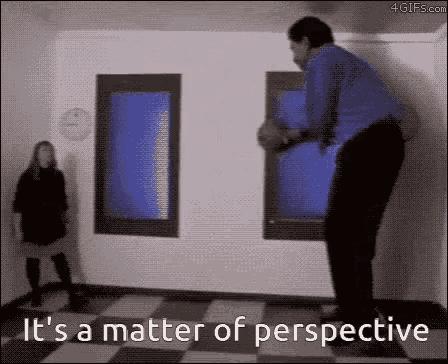Explore the intricacies of narrative perspective with this lesson! Students delve into the impact of different storytelling viewpoints on reader engagement and narrative depth. They analyze famous examples, discuss personal preferences, and practice writing excerpts from varied narrative perspectives to enhance their storytelling skills.
Describe These Pictures


Story 1:
Every night, Mom told her kid a story. Tonight, she began, "Once upon a time, a brave knight..." The kid's eyes widened with excitement. "What happens next, Mom?" she asked eagerly. Mom smiled and continued, creating a magical world with her words, where dreams came to life.
Story 2:
A fairy lived in a magical well. One day, she found a storybook floating on the water. Curious, she opened it and saw tales of adventure. As she read, the fairytale world came alive, and the fairy found herself in a new story, full of wonder and excitement.
Vocabulary
a story or account of events.
- The narrative is compelling and keeps readers engaged.

a particular way of viewing something.
- Changing the perspective can make the story more interesting.

to untangle or undo braids.
- She had to unbraid her hair before she could go to sleep.

to continue doing something despite difficulties.
- He decided to stick to his plan, no matter what.

moisture exuded through the pores of the skin.
- After the long climb, he was covered in sweat.

the quality of being close or near.
- The first person narrative creates a sense of closeness to the character.

to create a feeling of excitement or anxious uncertainty.
- The author builds suspense by withholding key information.

- He felt alienated from his friends after moving to a new city.

- The omniscient narrator provides a broader view of the story.

- The delusional narrator believes they are always right.

- Writers often experiment with different points of view.

to tell someone about something that happened.
- She recounted the events of the day to her friend.

Reading
The opening lines of Ralph Ellison’s Invisible Man, Virginia Woolf’s Mrs. Dalloway, and Italo Calvino’s If on a winter’s night a traveler illustrate the importance of point of view in storytelling. The choice of who tells a story and from what perspective can transform a narrative completely.
Take the classic fairytale of Rapunzel: "Rapunzel, Rapunzel," the Prince called, "let down your hair." Rapunzel unbraided her hair and slung it out the window. The prince climbed her tresses into the tower. This version uses a third person perspective, where the narrator is outside the story. However, the tale can also be told from a first person perspective, as if narrated by a character in the story:
The tail end of Rapunzel’s locks plopped down at my feet. I grabbed on and began to climb… ugh! I couldn’t untangle myself. Strands came off all over me, sticking to my sweat.
Or imagine Rapunzel narrating her own story:
I hope he appreciates how long it takes to unbraid 25 feet of hair, I thought. OUCH! I'll be honest; I thought my scalp would stretch off of my skull. "Can you climb any faster?" I yelled.
In second person, the story addresses the reader directly:
He calls your name. He wants you to let your hair down. You just finished braiding it, but hey– you don't get a lot of visitors.
Each perspective—third person, first person, and second person—has its unique possibilities and constraints. Third person narrators can be either limited, focusing on one character’s thoughts and feelings, or omniscient, offering a broader view of all characters and events. This perspective can create a feeling of distance, which might be useful in certain stories.
A first person narrative brings readers closer to the character’s experience but is limited by the narrator's knowledge and perspective. This can build suspense as readers discover information alongside the character. However, first person narrators might not always be reliable—they can be delusional or dishonest. For example, in Kazuo Ishiguro’s The Remains of the Day, the butler Stevens recounts his years of service but fails to recognize the flaws of the man he serves, revealing deeper cultural and class issues.
Justin Torres’s We the Animals uses a plural first person narrator at the start: “We were six snatching hands, six stomping feet; we were brothers, boys, three little kings locked in a feud for more.” The story shifts to first person singular later, as one brother begins to feel alienated from the others.
Second person perspective, though less common, places the reader directly into the character’s shoes. It can create urgency and suspense, or serve to distance the narrator from their own story by referring to themselves as “you” instead of “I.”
Writers constantly experiment with new variations on point of view. Emerging virtual and augmented reality technologies might further expand these possibilities, offering new ways to experience and tell stories.
A: The opening lines illustrate the importance of point of view in storytelling and can transform a narrative completely.
A: In third person, the narrator is outside the story, providing a view where Rapunzel unbraids her hair and the prince climbs up, creating a feeling of distance.
A: A first person narrative can create suspense by limiting the story to the narrator’s knowledge, allowing readers to discover information alongside the character.
A: The novel uses first person narration where Stevens, the butler, recounts his years of service but fails to acknowledge his master’s flaws, highlighting deeper cultural issues.
A: Second person perspective is less common and places the reader directly into the character’s shoes, creating urgency and suspense or distancing the narrator from their own story.
Discussion with Sample Answers
A: Yes, I read Gone Girl by Gillian Flynn, which uses an unreliable narrator. It kept me constantly guessing and added a layer of complexity to the plot.
A: In Harry Potter, if the story were told from Draco Malfoy's perspective, it would provide insight into the Slytherin viewpoint and potentially elicit more sympathy for him as a character.
A: I wrote a short story from the first person perspective and found it challenging to convey events outside the narrator's direct experience. It made me focus more on the character's internal thoughts and feelings.
A: I find second person narratives intriguing because they immerse me in the story. However, sometimes it feels awkward if I can't relate to the character's actions or decisions.
A: An omniscient narrator often gives a more comprehensive understanding of the characters, but it can also create a sense of distance. For example, in War and Peace by Leo Tolstoy, the omniscient narrator provides deep insights into many characters, making the epic scope possible.
Opinionated Questions
Personally, I prefer stories told from a first person perspective because it allows me to connect more deeply with the narrator's emotions and thoughts. It feels like I'm experiencing the story alongside the protagonist.




